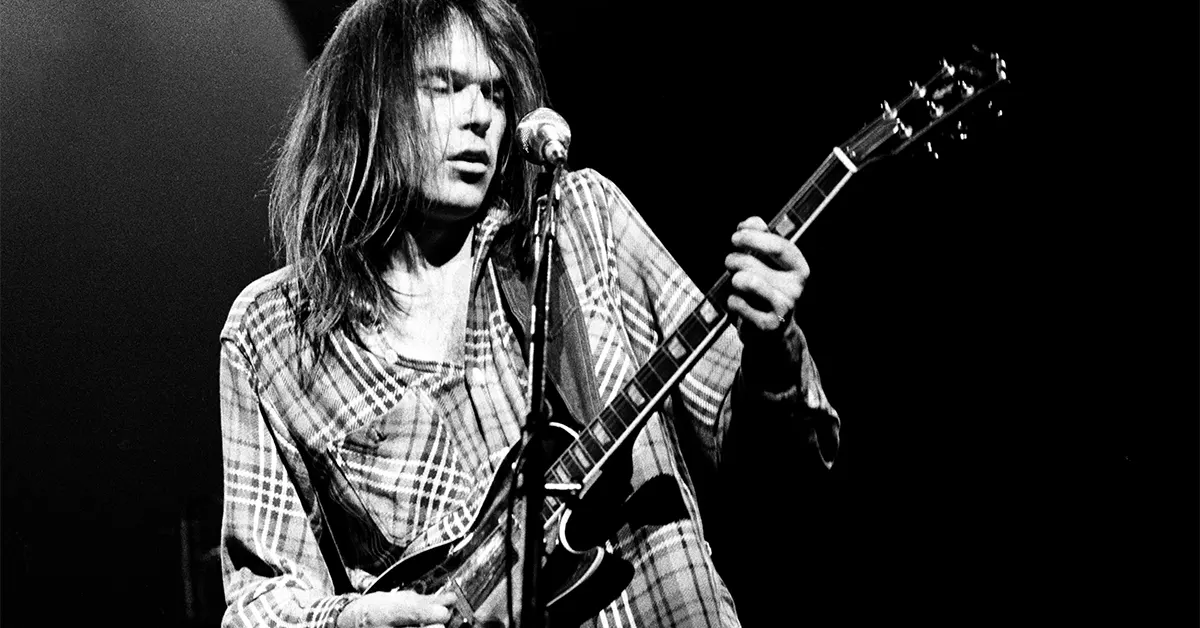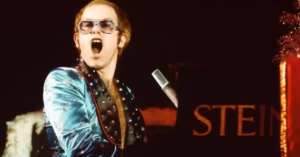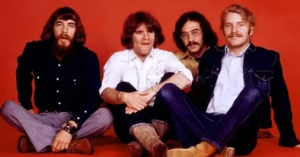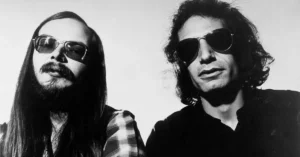Neil Young: The Restless Heart of Rock and Folk
Neil Young. Early Life and Career Beginnings
Neil Percival Young was born on November 12, 1945, in Toronto, Canada. Raised in Winnipeg, he began performing in the early 1960s, initially in folk and rockabilly bands before heading to California, where he would help shape the future of American rock.
Neil Young. Buffalo Springfield and CSNY (1966–1970)
✦ Buffalo Springfield (1966–1968)
Young first gained attention as a guitarist, singer, and songwriter in Buffalo Springfield, alongside Stephen Stills and Richie Furay. Their mix of folk, psychedelia, and political lyrics laid groundwork for West Coast rock.
Key song:
- “Mr. Soul” – A fuzzed-out, self-aware anthem
- “Expecting to Fly” – A lush orchestral ballad
✦ Crosby, Stills, Nash & Young (1969–1970)
Young joined Crosby, Stills & Nash just before their Woodstock performance, bringing a darker, rawer edge.
Key contributions:
- “Helpless” – A wistful ode to his Canadian roots
- “Ohio” – A protest song written in response to the Kent State shootings; raw and immediate
Though CSNY had immense success, Young’s independence and creative volatility often clashed with the group’s harmony-focused aesthetic.
Neil Young. Solo Career and Crazy Horse (1968–1979)
Neil Young’s solo career is characterized by constant reinvention and emotional honesty. He often alternated between acoustic introspection and loud, grungy distortion.
✦ Everybody Knows This Is Nowhere (1969)
His first album with Crazy Horse, his long-time backing band.
- “Cinnamon Girl”
- “Down by the River”
- “Cowgirl in the Sand”
These songs showcased loose, extended jams and raw energy.
✦ After the Gold Rush (1970)
Blended fragile ballads, piano pieces, and environmental themes.
- “Southern Man” – An anti-racist anthem later answered by Lynyrd Skynyrd
- “Only Love Can Break Your Heart” – One of his most covered songs
✦ Harvest (1972)
His commercial breakthrough.
- “Heart of Gold” – His only #1 hit
- “Old Man” – A song of empathy and age
- “The Needle and the Damage Done” – About heroin addiction
Though it made him a star, Young reacted to its success with a dark trilogy of albums:
- Time Fades Away (1973)
- On the Beach (1974)
- Tonight’s the Night (1975) – A cathartic tribute to two friends who died of overdoses
✦ Rust Never Sleeps (1979)
Half acoustic, half electric — including:
- “My My, Hey Hey (Out of the Blue)”
- “Hey Hey, My My (Into the Black)” — Helped inspire the future grunge movement
Neil Young. The Experimental Years and Reinvention (1980s)
Young’s 1980s were artistically bold but commercially erratic.
Highlights:
- Trans (1982) – Synth-heavy and vocoder-drenched, inspired by his son’s cerebral palsy
- Old Ways (1985) – A full-on country album
- Landing on Water (1986) – Synth-pop meets rock angst
He was even sued by Geffen Records for releasing “uncommercial” music — a badge of honor for Young.
Return to Form and “Godfather of Grunge” (1990s)
✦ Freedom (1989)
A return to form, featuring “Rockin’ in the Free World” — a new anthem of defiance.
✦ Ragged Glory (1990) and Weld (1991)
Grunge-before-grunge with Crazy Horse — loud, messy, powerful.
Neil became a major influence on Nirvana and Pearl Jam, and earned the title “Godfather of Grunge.”
He collaborated with Pearl Jam on:
- Mirror Ball (1995)
2000s–2020s: Activism and Legacy
Neil Young’s later work has often focused on activism, politics, and personal loss.
Notable albums:
- Greendale (2003) – A rock opera about small-town America and environmentalism
- Prairie Wind (2005) – Reflection after a brain aneurysm
- Living with War (2006) – A blunt protest against the Iraq War
- Le Noise (2010) – Raw, atmospheric solo electric guitar work
- Barn (2021) – A Crazy Horse reunion album that continues his sonic mission
He also launched Pono, a high-resolution music service, and pulled much of his music from Spotify over ethical concerns.
Legacy and Recognition
Neil Young is revered for his:
- Artistic independence and risk-taking
- Dual mastery of acoustic and electric styles
- Political courage and emotional honesty
He’s influenced artists across genres, from Radiohead, Wilco, and Beck, to Eddie Vedder, Lucinda Williams, and The War on Drugs.
Awards and honors:
- Inducted into the Rock and Roll Hall of Fame twice (1995 solo, 1997 with Buffalo Springfield)
- Multiple Grammy Awards
- Recipient of the Order of Canada
Interesting Facts
- He owns Lionel Trains, a model train company, and is a lifelong enthusiast.
- His Bridge School Benefit concerts raised millions for children with disabilities.
- He’s a fierce environmentalist and advocate for clean energy, even building an electric car prototype.
- Neil often records live to tape and releases unpolished performances intentionally.





